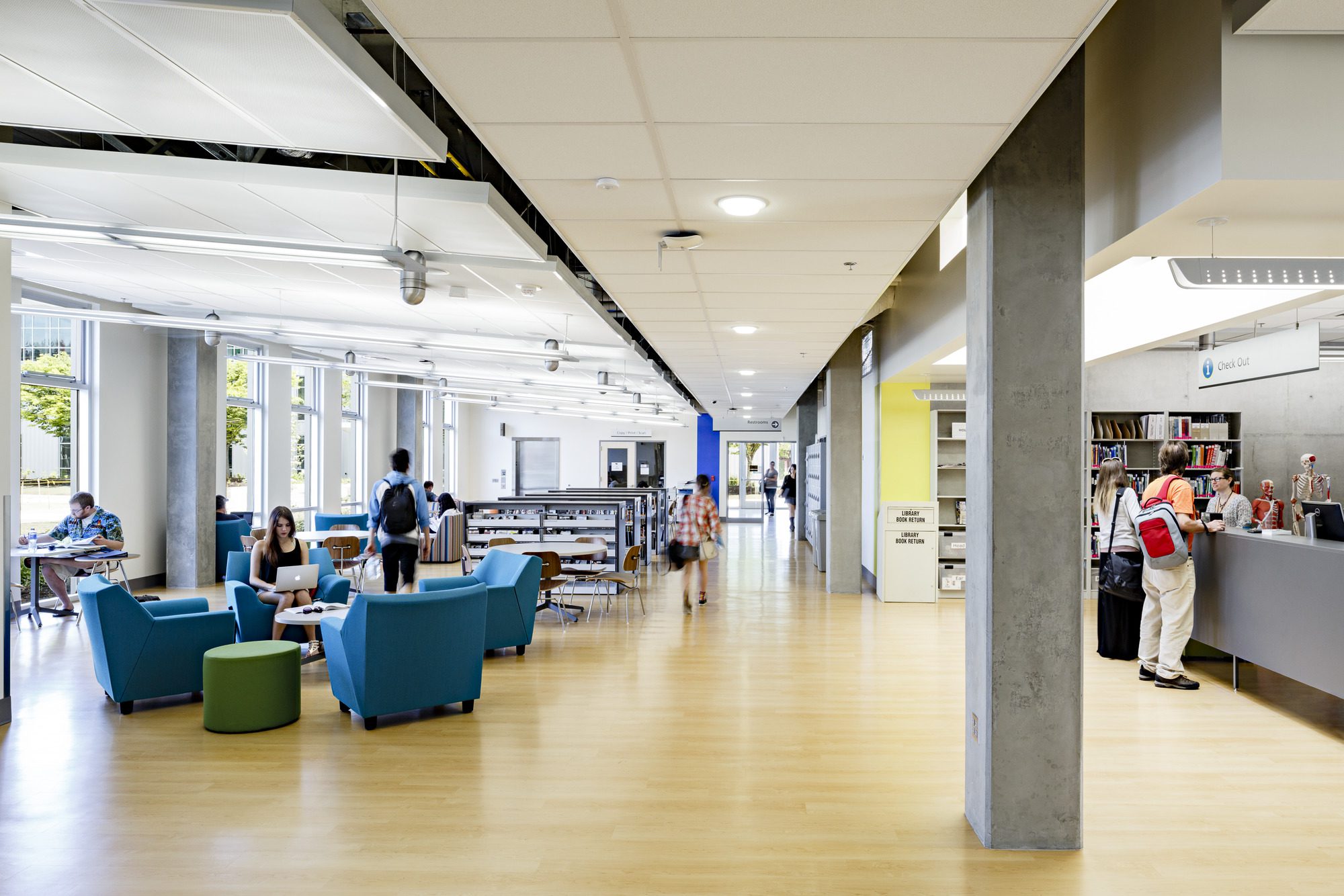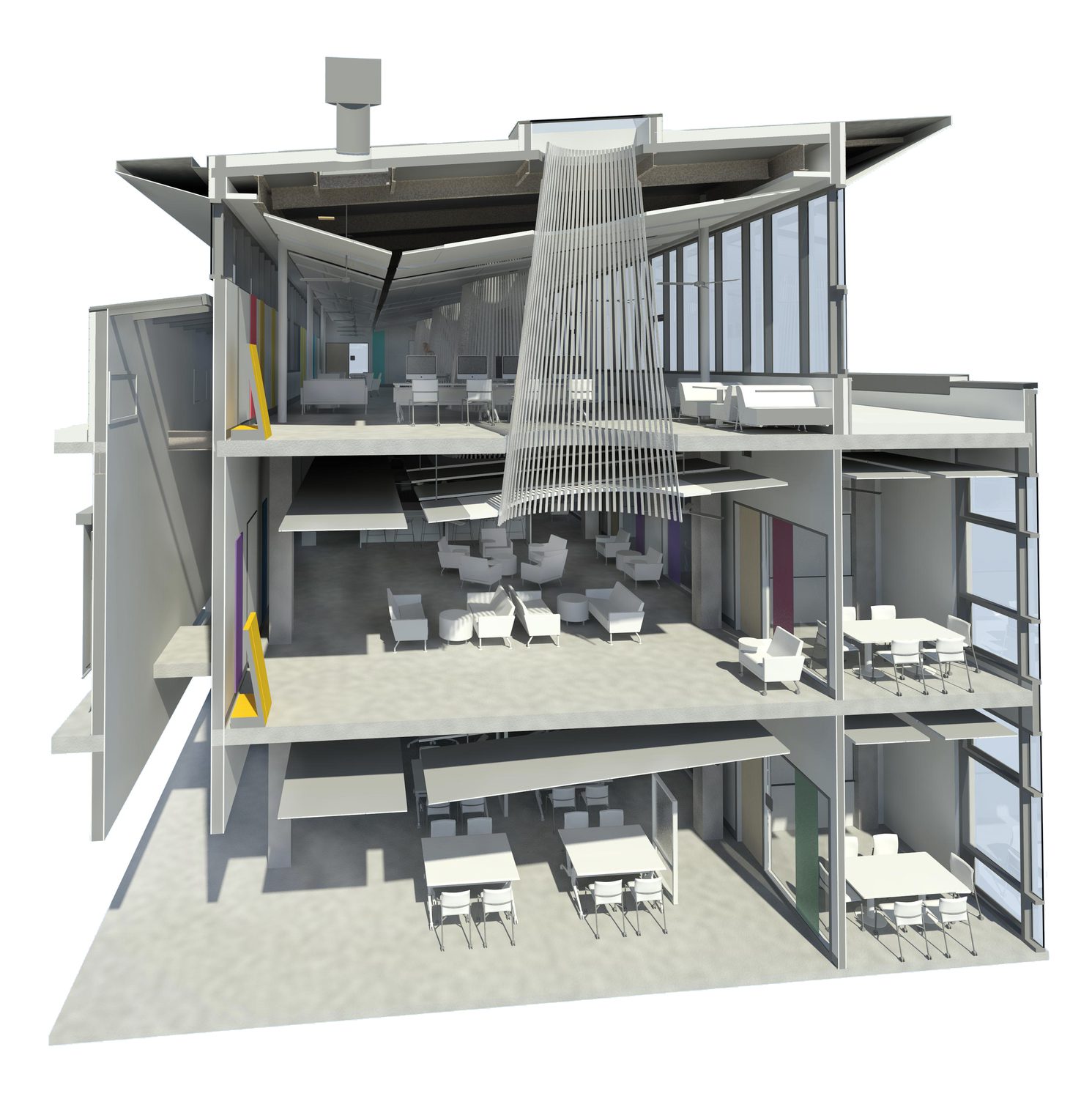A Fresh Take on Student Services
Innovative thinking informed both buildings’ design with the priorities of student success, flexible learning, energy efficiency, and user comfort as the primary focus from beginning to end.
The Student Commons consolidates a variety of student services and amenities in a central location. Traditional services are available, such as the Business Office, Financial Aid, Registrar, Admissions and Advising, along with other critical functions, including the Testing Center, Orientation Lab, Career Center, Bookstore, and student study spaces.
Creative programming established a library that contains traditional library services but also combines Computing Resource Center, Student Learning Center, Tutoring, Volunteer Literacy Services, general classrooms and many study areas.










